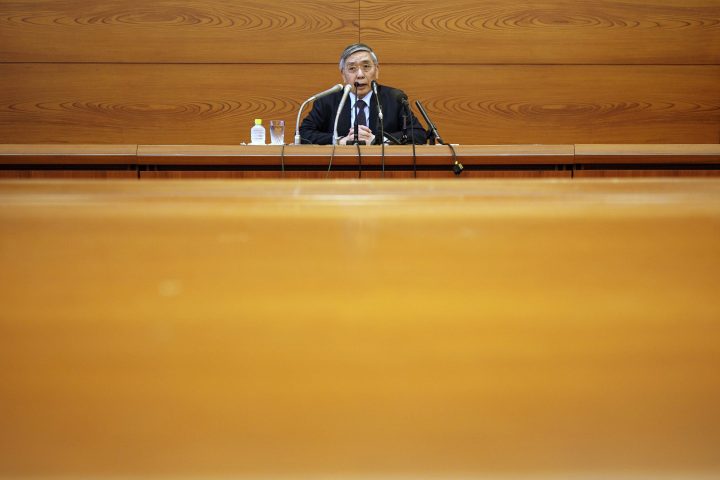Japan was hit by its biggest economic contraction on record in the second quarter as the coronavirus pandemic crushed consumption and exports, keeping policymakers under pressure for bolder action to prevent a deeper recession.

The third straight quarter of declines knocked the size of real gross domestic product (GDP) to decade-low levels, wiping out the benefits brought by Prime Minister Shinzo Abe’s “Abenomics” stimulus policies deployed in late 2012.
While the economy is emerging from the doldrums after lockdowns were lifted in late May, many analysts expect any rebound in the current quarter to be modest as a renewed rise in infections keep consumers’ purse-strings tight.
“The big decline can be explained by the decrease in consumption and exports,” said Takeshi Minami, chief economist at Norinchukin Research Institute.
“I expect growth to turn positive in the July-September quarter. But globally, the rebound is sluggish everywhere except for China.”
The world’s third-largest economy shrank an annualized 27.8 per cent in April-June, government data showed on Monday, marking the biggest decline since comparable data became available in 1980 and slightly bigger than a median market forecast for a 27.2 per cent drop.

While the contraction was smaller than a 32.9 per cent decrease in the United States, it was much bigger than a 17.8 per cent fall Japan suffered in the first quarter of 2009, when the collapse of Lehman Brothers jolted global financial markets.

Get breaking National news
The size of Japan’s real GDP shrank to 485 trillion yen, the lowest since April-June 2011, when Japan was still suffering from two decades of deflation and economic stagnation.
(Click here for an interactive graphic of real and nominal GDP since 2011: https://tmsnrt.rs/2Fwq2JK)
CONSUMPTION PLUNGES
The main culprit behind the dismal reading was private consumption, which plunged a record 8.2 per cent as lock-down measures to prevent the spread of the virus kept consumers at home.
External demand – or exports minus imports – shaved a record 3.0 percentage point off GDP, as overseas shipments plunged 18.5 per cent, with auto exports hit particularly hard.
Falling global vehicle sales have hurt automakers like Mazda Motor Corp and Nissan Motor Co, among the biggest drivers of Japan’s economy, and their parts suppliers.

Capital expenditure declined 1.5 per cent in the second quarter, less than a median market forecast for a 4.2 per cent fall, as solid software investment made up for weak spending in other sectors.
Economy Minister Yasutoshi Nishimura conceded the GDP readings were “pretty severe,” but pointed to some bright spots such as a recent pickup in consumption.
“We hope to do our utmost to push Japan’s economy, which likely bottomed out in April and May, back to a recovery path driven by domestic demand,” he told a news conference.
Japan has deployed massive fiscal and monetary stimulus to cushion the blow from the pandemic, which hit an economy already reeling from last year’s sales tax hike and the U.S.-China trade war.
While the economy has re-opened after the government lifted state of emergency measures in late May, a worrying resurgence in infections cloud the outlook for business and household spending.
(Reporting by Leika Kihara and Tetsushi Kajimoto, additional reporting by Kaori Kaneko and Daniel Leussink; Editing by Sam Holmes)








Comments